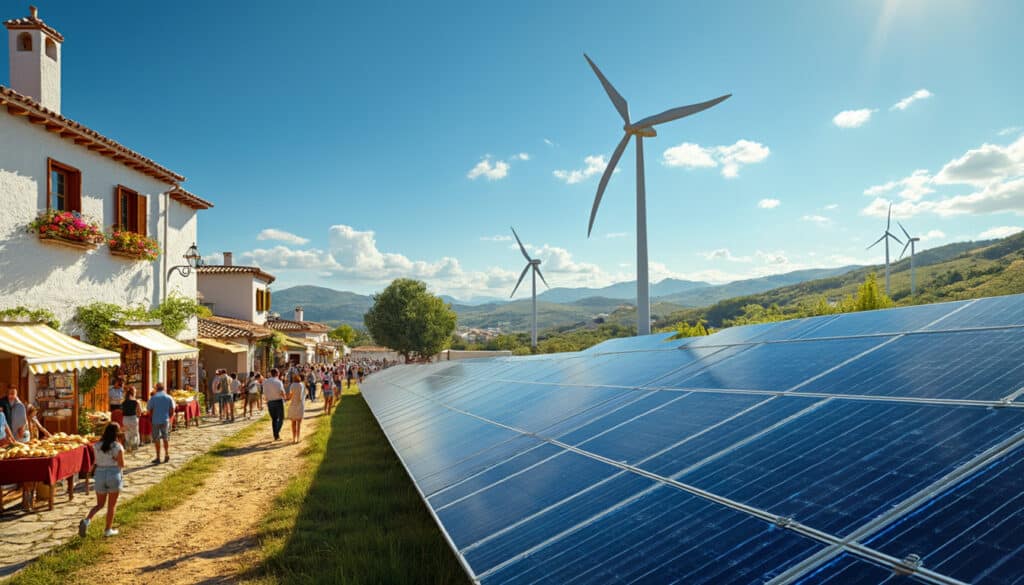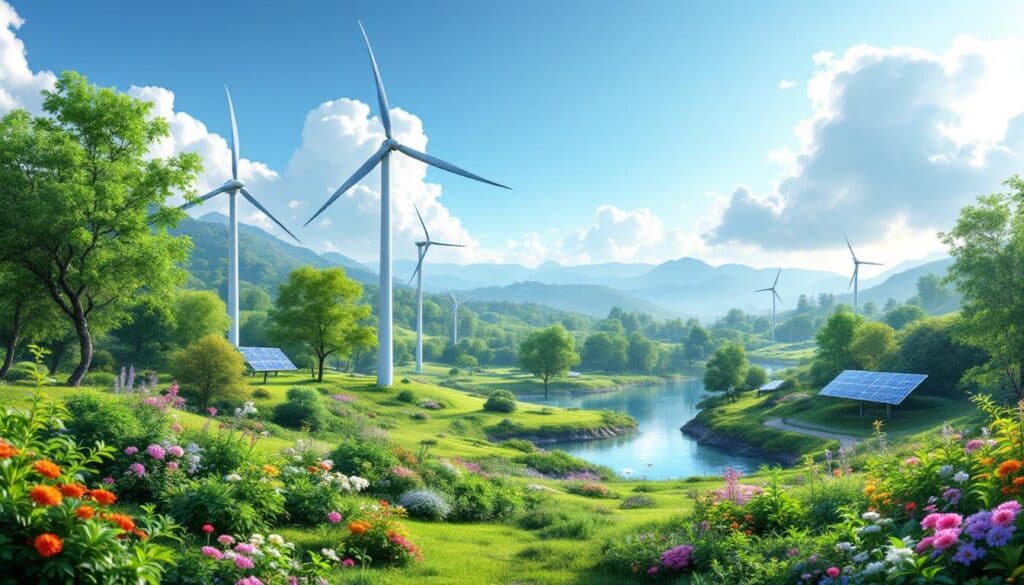April 16, 2025 will be etched in the energy history of Spain.
For the first time, the national grid operated entirely on renewable energy.
This milestone marks a significant step towards a sustainable future.
On that day, thanks to a perfect synergy between wind, solar, and hydropower, the entire electricity demand of the peninsula was met. Five days later, solar power set a new record by generating 20,120 MW of instantaneous power on April 21 at 1:35 PM, which is 0.7% more than the previous record set on July 12, 2024. At that time, photovoltaic panels represented 61.5% of the national energy mix and covered 78.6% of electricity demand.
According to the network operator Red Eléctrica, wind energy produced 256 GWh, representing 45.8% of total production. Solar followed with 151 GWh (27%), while hydropower sources contributed 129 GWh (23.1%). Thermal solar energy provided 11 GWh (2%) and other renewables added an additional 11 GWh (1.9%). Renewable waste generated 1 GWh (0.2%).
This achievement is a remarkable illustration of the capacity of bioresources and waste management technologies to transform natural resources into clean and renewable energy. Methanization projects and biomass valorization play a key role in this energy transition, paving the way for a greener and more sustainable future for Spain.

Spain Achieves Its First Week Day with 100% Renewable Energy on the National Grid
April 16, 2025 marks a historic milestone for Spain. For the first time, the electrical grid of the Spanish peninsula was fully powered by renewable energy during a weekday. This exceptional feat was made possible by a perfect synergy between wind, solar, and hydraulic energy, thus meeting the total electricity demand.
How Did Spain Achieve This Ecological Milestone?
The attainment of 100% renewable energy on the Spanish grid results from several converging factors. Firstly, Spain has remarkable wind and solar potential, making the most of its natural resources. Wind production generated 256 GWh, representing 45.8% of the total production, while photovoltaic solar energy contributed 151 GWh, or 27% of the energy mix. Hydropower sources, for their part, provided 129 GWh, constituting 23.1% of the total.
This success was also supported by technological advancements in energy storage and optimized network management. The ability to store surplus electricity generated allowed for overcoming the inherent fluctuations of renewable energies, ensuring the stability essential for electricity supply.
What Were the Key Moments of This Historic Day?
At 11:15 AM on April 16, a perfectly orchestrated combination of wind and photovoltaic energy managed to cover 100.63% of the national electricity demand, a historic record in the energy history of Spain, occurring in the middle of the week. This achievement not only highlights the maturity of the country’s renewable infrastructure, but also a concrete commitment to a sustainable energy transition.
A few days later, on April 21, the solar potential was once again highlighted when a new instantaneous record was established. At 1:35 PM, solar installations generated 20,120 MW, covering 78.6% of the demand and 61.5% of the national energy mix. This peak solar production showcases Spain’s ability to maximize the use of its solar resources, thus strengthening its position as a leader in renewable energies.
What Are the Impacts of This Energy Transition on the Spanish Economy?
The transition to renewable energies has positive repercussions on the Spanish economy. It creates new job opportunities in the sectors of installation and maintenance of renewable infrastructures. Additionally, reducing dependence on fossil energy imports enhances the country’s energy security and stabilizes energy costs in the long term.
Furthermore, investments in green technologies stimulating research and development contribute to innovation and Spain’s international competitiveness. Methanization and biomass valorization projects, for example, open new avenues for waste management and clean energy production, integrating aspects of sustainability and environmental efficiency.
What Challenges Remain to Sustain This Momentum?
Despite these successes, several challenges remain to ensure the sustainability of this renewable momentum. Fluctuations in weather conditions can affect wind and solar production, necessitating robust storage solutions and smart management of the electric grid. Moreover, the expansion of renewable infrastructure must occur in parallel with environmental preservation, as highlighted by the project at the Grand Telescope of the World, illustrating the tensions sometimes between energy development and scientific conservation.
Additionally, the energy transition must be supported by robust public policies and sustained support from private and public stakeholders. International collaboration and the exchange of best practices will also be essential to overcome the technical and financial obstacles that may arise.
How Does Spain Position Itself Relative to Other Nations in the Race for Renewable Energies?
Spain stands out in the global race for renewable energies. While other countries, like the United Kingdom, have also made significant progress, Spain has managed to capitalize on its natural assets to achieve ambitious goals. The diversity of renewable sources exploited by Spain, ranging from wind to solar to hydraulic, grants it exemplary energy resilience and flexibility.
However, competition remains fierce, particularly with players like the United States and China, who are heavily investing in green technologies. Spain must continue to innovate and invest in research to maintain its lead and respond to the growing challenges related to climate change and global energy demand.
What Lessons Can Be Learned from This Success for Other Countries Seeking Sustainability?
The Spanish experience offers valuable lessons for nations looking to adopt a similar energy transition. Firstly, diversification of renewable energy sources is essential to ensure stable and continuous production. The harmonious integration of wind, solar, and hydraulic, as evidenced by Spain’s success, can serve as a model for other countries.
Secondly, investments in storage infrastructures and grid management technologies are crucial for optimizing the use of renewable resources. This not only maximizes production but also ensures an efficient and reliable distribution of electricity.
Finally, the involvement of stakeholders, including governments, businesses, and civil society, is indispensable for creating an environment conducive to innovation and the implementation of sustainable energy projects. Collaboration and mutual support enhance the resilience of energy systems in the face of the complex challenges of the ecological transition.
What Perspectives Does Spain Envision for the Future of Its Renewable Energies?
Spain continues to plan and develop ambitious projects to strengthen its renewable energy portfolio. Initiatives such as expanding large-scale solar farms, enhancing offshore wind capacities, and developing new storage technologies promise to consolidate Spain’s position as a leader in renewable energies.
Moreover, Spain is exploring innovative solutions such as integrating renewable energies into urban infrastructures. For example, photovoltaic solar facades (BIPV) in Madrid illustrate how cities can become active players in clean energy production while addressing architectural and aesthetic needs.
At the same time, Spain is engaging in international cooperation to share its expertise and support developing countries in their own energy transitions. This collaborative approach fosters global adoption of renewable energies and contributes to the worldwide fight against climate change.
What Are the Environmental Benefits of This Transition to Renewables?
The shift to 100% renewable energy brings significant advantages for the environment. The reduction of greenhouse gas emissions contributes significantly to the fight against global warming, while the decrease in air pollution improves quality of life and public health. Additionally, the sustainable exploitation of natural resources helps preserve ecosystems and biodiversity.
Another major benefit lies in decreasing dependence on fossil fuels, which reduces the carbon footprint associated with the transport and storage of these resources. This transition also promotes innovation in green technologies, encouraging a more circular and environmentally friendly economy.
What International Examples Illustrate Similar or Contrasting Advances?
Spain’s journey in renewable energies finds parallels in other nations. In the United Kingdom, for instance, renewable energy powered more than 50% of electricity in 2024, thanks to strong expansion of wind and solar capacities (source). However, some countries like the United States and China continue their own energy diversification strategies, with massive investments in various green technologies.
In contrast, some projects, such as the proposed nuclear expansion in certain regions, could potentially hinder progress on renewables. A recent analysis estimates that a coalition nuclear plan could compromise renewable energy projects with an impact of $58 billion (source), highlighting tensions between different energy approaches.
Moreover, similar challenges in grid management are faced globally, as reported in a report on the New York grid, shedding light on the complexities of integrating renewables into existing energy systems.
By overcoming these challenges and achieving notable advancements, Spain positions itself as an inspiring model for other nations seeking to embrace a sustainable and efficient energy transition.
Articles similaires
Thank you!
We will contact you soon.














